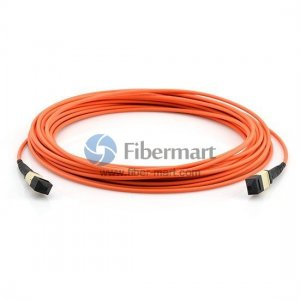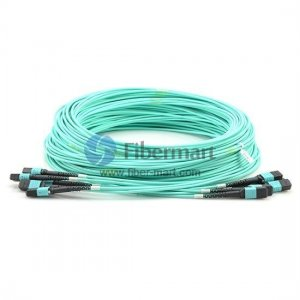In today’s hyper-connected world, the demand for faster and more reliable data transmission is ever-present. Whether you’re managing a data center, upgrading your network infrastructure,
or enhancing your cloud computing capabilities, choosing the right cables is crucial for optimizing performance. That’s where QSFP56 cables come into play.

These high-speed optical fiber cables are engineered to meet the demands of modern networks, offering unparalleled efficiency and reliability. Let’s delve into when and why you should consider incorporating QSFP56 cables into your network setup.
At Fibermart, we understand the importance of staying ahead in the fast-paced world of networking. With our wide range of fiber optics cables and integrated network solutions, we empower businesses to achieve seamless connectivity and unmatched performance.
Now, let’s explore the best practices and considerations for leveraging QSFP56 cables in your network infrastructure.
Maximizing Data Transmission Efficiency with QSFP56 Cables:
- High Speeds: QSFP56 cables support data rates of up to 200 Gbps, making them ideal for bandwidth-intensive applications such as cloud computing, high-performance computing, and data center interconnects.
- Flexibility: These cables are compatible with a wide range of networking equipment, including switches, routers, and servers, offering flexibility in deployment scenarios.
- Low Latency: With minimal latency, QSFP56 cables ensure swift data transmission, which is critical for real-time applications like video streaming, online gaming, and financial trading platforms.
- Long Reach: QSFP56 cables can transmit data over long distances, providing reliable connectivity even in large-scale network deployments.
- Power Efficiency: Designed for energy efficiency, QSFP56 cables help reduce power consumption, contributing to lower operating costs and environmental sustainability.
Considerations for Deployment:
- Compatibility: Ensure compatibility with existing networking infrastructure and equipment to avoid compatibility issues.
- Cable Length: Choose the appropriate cable length based on the distance between network devices to minimize signal degradation.
- Environmental Conditions: Consider environmental factors such as temperature, humidity, and electromagnetic interference when deploying QSFP56 cables to ensure optimal performance and longevity.
- Budgetary Constraints: While QSFP56 cables offer superior performance, consider the budgetary implications of deploying these high-speed cables compared to alternative solutions.
QSFP56 cables are a game-changer in the world of network connectivity, offering unmatched speed, reliability, and efficiency. Whether you’re building a data center, upgrading your network infrastructure, or expanding your cloud computing capabilities, QSFP56 cables are the ideal choice for maximizing data transmission performance.

At Fibermart, we provide a comprehensive range of fiber optics cables and integrated network solutions to meet your networking needs.
Contact us today at +1 (205)-282-9089 to learn more about how we can help you achieve seamless connectivity and unparalleled performance in your network setup.











